Some native birds you might see or hear
Hamilton Halo - bringing native birds back into Hamilton city and surrounds
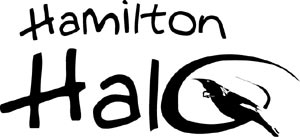 Native birds such as tūī and bellbirds were once abundant in the area where Hamilton stands. Due to introduced pests (rats and possums) and loss of habitat and food sources, many of our native birds are rarely seen in our city.
Native birds such as tūī and bellbirds were once abundant in the area where Hamilton stands. Due to introduced pests (rats and possums) and loss of habitat and food sources, many of our native birds are rarely seen in our city.
The Hamilton Halo project aims to bring native birds, such as tui and bellbirds, back into Hamilton city. The 'Halo' is the project area - a ring drawn around Hamilton, taking in key sites where tūī breed.
Hamilton Halo’s work focuses on increasing the number of bellbirds and tūī that survive in bush breeding areas and making the city an attractive place for those birds to stay, feed and breed.
Hamilton Halo works with Hamilton City Council, community groups and landowners on pest control and plantings at key sites within the city. This helps provide year-round sources of food and safe habitat for the tūī and bellbird populations that have increased numbers in the bush and now need more habitat to breed in.
Since the Hamilton Halo project started in 2007, tūī numbers have increased significantly and tūī have started breeding in the city.
Waikato Regional Council leads the project. Landcare Research is a project partner and conducts and shares research related to the project. The project is also supported by the Department of Conservation, Hamilton City Council, Weedbusters and Tūī 2000 (a Hamilton-based environmental group involved in the restoration of Pukemako Scenic Reserve, a Hamilton Halo key site.)
Where is Hamilton Halo?
The 'Halo' is a ring drawn around Hamilton, taking in key sites where tūī breed. The halo's radius is approximately 20km, as this is how far tūī will fly to feed.
The map below shows the Hamilton Halo area and its key sites. The key sites which are receiving pest control are identified in red.
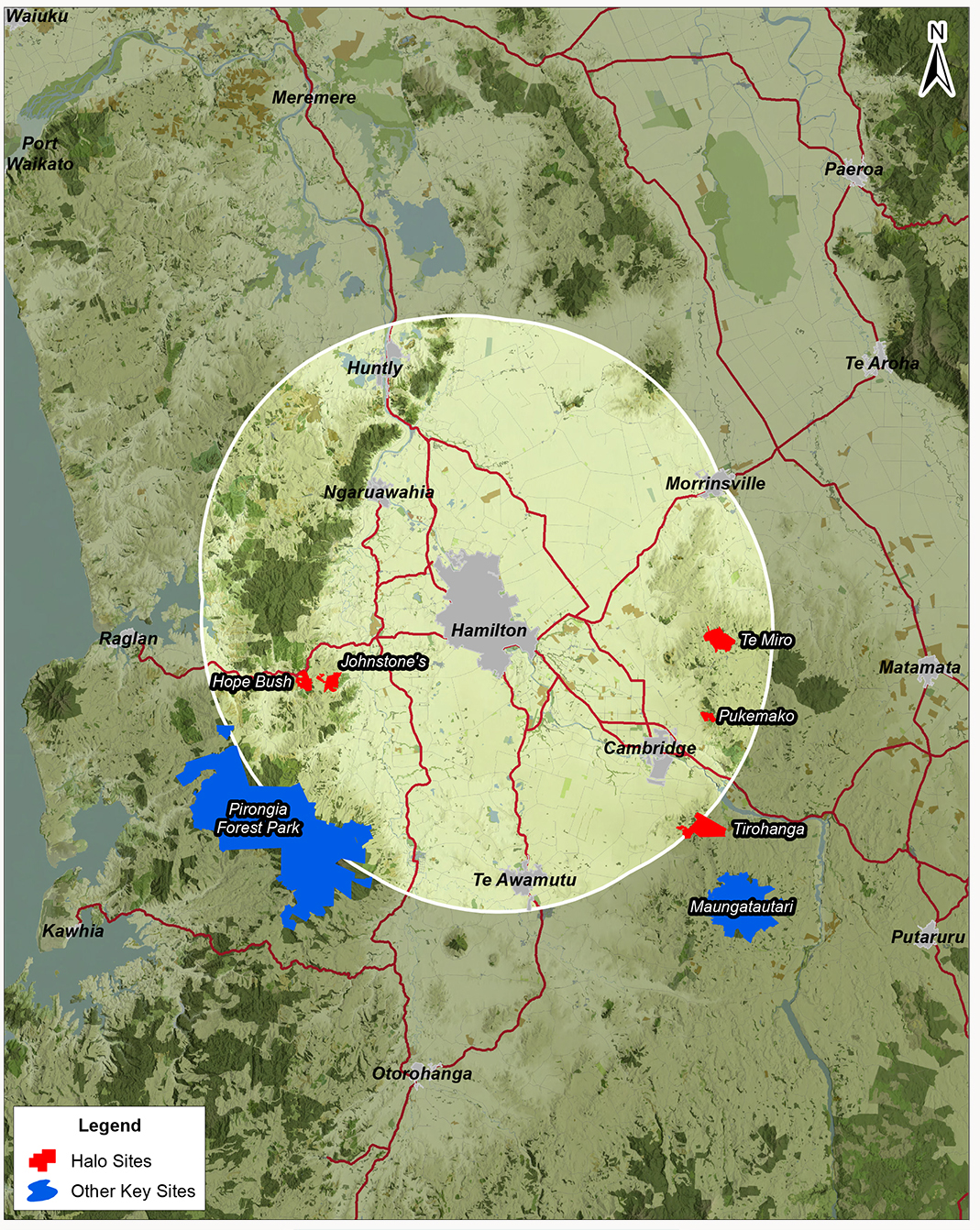
More information
You can read or download our factsheet on the Hamilton Halo project, below.
You might also find the information in the Pukemokemoke Bush Trust's bush learning resource useful.
How can I help?
If you live in Hamilton, you can help to make it safer for tūī and bellbirds to breed in the city by controlling animal and plant pests on your property. Visit our Pest Hub to find out more.
You can also plant native species to provide a food source and habitat. Check out our gardener's guide, below.
Gardener's guide to planting for tūī and bellbirds in Hamilton
Gardeners can help to draw tui and bellbirds to Hamilton by planting native food species. As well as tui and bellbirds, native plants and trees can provide a food source and habitat for other native birds and insects.
By planting certain native species you can help to provide year-round food for tūī and bellbirds in the city. Native species provide tūī and bellbirds with a summer food source, as many of the introduced species only flower over winter. Increasing the amount of vegetation suitable for native birds such as tui and bellbird to feed (and nest in) is essential for their return.
Flower nectar is the main food for tui, but they also eat fruit. Bellbirds eat nectar.
Waikato Regional Council recommends native plants. Although exotic trees can provide supplementary food, especially over the winter, care needs to be taken not to plant invasive pest plants. The guide below includes a table that shows when various native plants are flowering or have nectar available for tui to feed on.



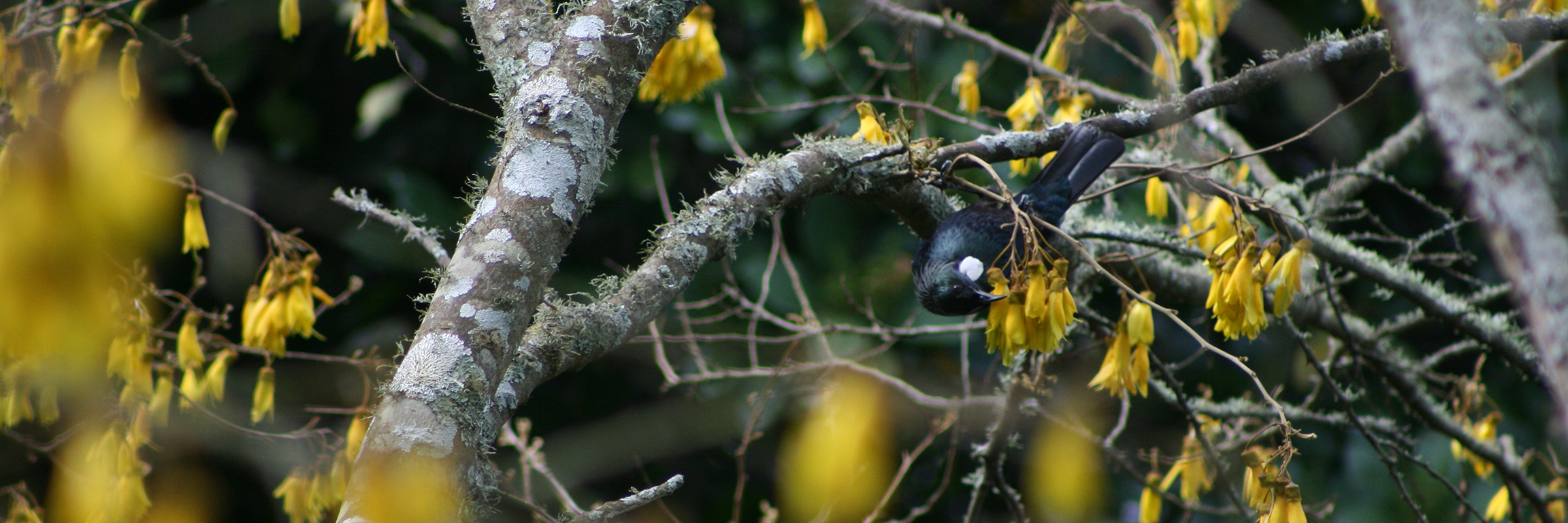
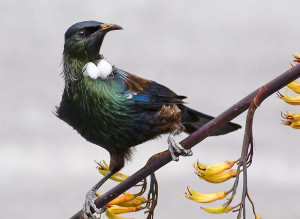 Tūī grow up to 30cm in length. The male tūī weighs approximately 120g and the female approximately 90g. Tūī are mostly black in colour but in the light have green, bluish-purple and bronze colouring with a lacy collar of white filaments and white throat tufts. Tūī have black legs, a curved black bill and a white wing bar. Both sexes of tūī look alike. Juvenile tūī are a dull slate black colour with glossy wings and tail, a greyish-white throat, and lack the white throat tuft or poi that are a distinctive feature of an adult tūī. Tūī breed between October and February. Native plants are a good source of food for them at this time of year.
Tūī grow up to 30cm in length. The male tūī weighs approximately 120g and the female approximately 90g. Tūī are mostly black in colour but in the light have green, bluish-purple and bronze colouring with a lacy collar of white filaments and white throat tufts. Tūī have black legs, a curved black bill and a white wing bar. Both sexes of tūī look alike. Juvenile tūī are a dull slate black colour with glossy wings and tail, a greyish-white throat, and lack the white throat tuft or poi that are a distinctive feature of an adult tūī. Tūī breed between October and February. Native plants are a good source of food for them at this time of year.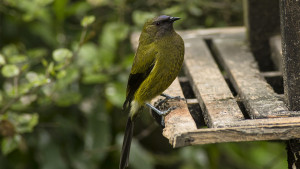 Bellbirds are endemic to New Zealand (only found in New Zealand), and until recently had not been seen in Hamilton for more than a century. The bellbird is known in
Bellbirds are endemic to New Zealand (only found in New Zealand), and until recently had not been seen in Hamilton for more than a century. The bellbird is known in 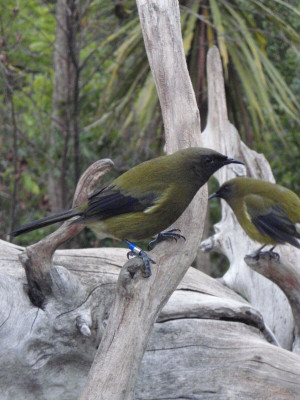 It’s all part of the bigger picture of urban restoration ecology. Bellbirds are good pollinators and are an important part of an urban eco-system. The return of birds like tui and bellbird to Hamilton will complement other biodiversity restoration initiatives such as the Waiwhakareke Natural Heritage Park, and gully restoration projects occurring in Hamilton.
It’s all part of the bigger picture of urban restoration ecology. Bellbirds are good pollinators and are an important part of an urban eco-system. The return of birds like tui and bellbird to Hamilton will complement other biodiversity restoration initiatives such as the Waiwhakareke Natural Heritage Park, and gully restoration projects occurring in Hamilton.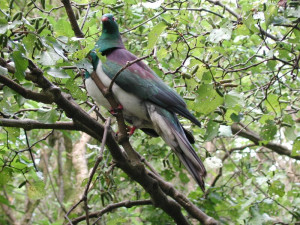 The kererū is New Zealand’s only surviving native pigeon. They are long-lived birds that breed very slowly, and they are currently fighting for survival.
The kererū is New Zealand’s only surviving native pigeon. They are long-lived birds that breed very slowly, and they are currently fighting for survival.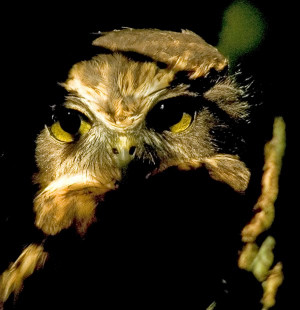 Moreporks are iconic New Zealand birds that are instantly recognisable from their distinctive calls. They are known to inhabit many different habitats in New Zealand, however, comparatively little is known about urban morepork populations.
Moreporks are iconic New Zealand birds that are instantly recognisable from their distinctive calls. They are known to inhabit many different habitats in New Zealand, however, comparatively little is known about urban morepork populations.

To ask for help or report a problem, contact us
Tell us how we can improve the information on this page. (optional)